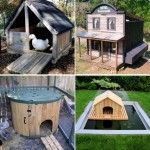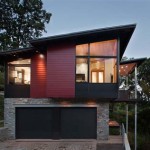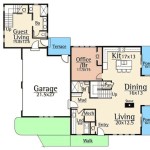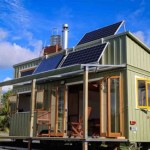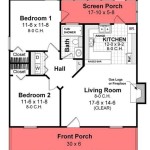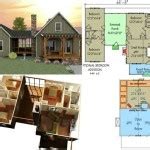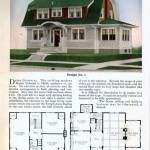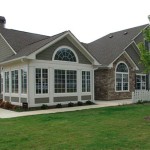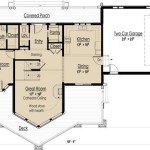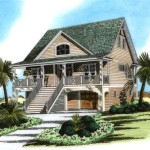Free Bat House Plans: Build a Home For Beneficial Creatures And Animals
Bats, often misunderstood and sometimes feared, are vital components of a healthy ecosystem. They serve as natural pest control agents, consuming vast quantities of insects, and are also crucial pollinators for various plant species. As natural habitats dwindle due to deforestation, urbanization, and agricultural expansion, providing alternative roosting locations becomes increasingly important for bat conservation. Constructing a bat house is a proactive way to support these beneficial creatures, offering them a safe and secure haven while simultaneously benefiting the surrounding environment. This article will explore the advantages of bat houses, provide guidance on choosing appropriate plans, and offer practical tips for successful construction and placement.
The benefits of attracting bats to a property are numerous. A single bat can consume thousands of insects nightly, significantly reducing the need for chemical pesticides. This natural pest control can be particularly valuable for gardeners, farmers, and homeowners battling mosquito infestations or crop-damaging insects. Beyond pest control, bats play a significant role in pollination, aiding in the reproduction of various plant species, including commercially important crops. By building a bat house, property owners contribute to biodiversity conservation and support a healthy, balanced ecosystem.
Various bat house designs exist, each catering to different bat species and climates. Choosing the appropriate plan is crucial for success. A careful consideration of local bat species, climate conditions, and available space will help in selecting the most effective design. This article provides guidance on accessing free bat house plans and outlines the key factors to consider before beginning construction.
Understanding Bat House Preferences: Key Factors for Success
Successful bat house construction hinges on understanding the specific needs and preferences of the target bat species. Several critical factors influence bat occupancy, including the size and type of bat house, its construction materials, internal temperature regulation, and its placement within the environment.
The size of the bat house determines the number of bats it can accommodate. Smaller, single-chamber bat houses are suitable for smaller colonies or individual bats, while larger, multi-chamber designs can house larger groups. Colony size varies by species, so researching the local bat population can inform the appropriate size selection. In general, larger bat houses are more likely to attract bats and support larger colonies.
Construction materials play a crucial role in temperature regulation within the bat house. Bats are sensitive to temperature fluctuations and prefer stable, warm environments. Untreated wood, particularly rough-sawn lumber, is generally preferred. Dark-colored paint or stain can increase the bat house's ability to absorb heat from the sun, which is particularly beneficial in cooler climates. However, it is essential to use water-based, VOC-free paints and stains to avoid harming the bats. Avoid using treated lumber, as the chemicals can be toxic to bats.
Internal temperature regulation is critical to bat occupancy. Bat houses should be designed to provide a range of temperature options, allowing bats to move to different areas within the structure based on their thermal needs. Multi-chamber bat houses, with varying degrees of sun exposure, can facilitate this. Adequate ventilation is also important to prevent overheating during hot summer months. The internal baffles should be spaced appropriately to allow for easy movement between chambers and provide sufficient roosting space.
Placement of the bat house is paramount. Bats prefer locations that are sheltered from wind and receive ample sunlight, particularly in the morning. Mounting the bat house on a pole or the side of a building, ideally facing south or east, maximizes sun exposure. Avoid placing bat houses under trees or near bright lights, as these can deter bats. A water source, such as a pond or stream, nearby can also increase the likelihood of occupancy. The height of the bat house is also important; it should be mounted at least 12 feet above the ground to provide bats with adequate space for entering and exiting the structure.
Accessing and Evaluating Free Bat House Plans
Numerous free bat house plans are available online and through various conservation organizations. However, the quality and suitability of these plans can vary significantly. It is essential to carefully evaluate the plans before beginning construction to ensure they meet the specific needs of the local bat species and are well-designed for structural integrity and temperature regulation.
Several reputable organizations offer free bat house plans, including Bat Conservation International (BCI), state wildlife agencies, and various environmental advocacy groups. These organizations often provide detailed instructions, material lists, and diagrams, ensuring that even novice builders can successfully construct a functional bat house. BCI, in particular, offers a range of plans tailored to different bat species and climates, based on years of research and experience.
When evaluating free bat house plans, several key factors should be considered. The plans should include detailed dimensions, clear instructions, and a comprehensive materials list. The design should incorporate features that promote temperature regulation, such as ventilation slots and multiple chambers. The plans should also specify the use of appropriate materials, such as rough-sawn lumber and water-based, VOC-free paints or stains. Avoid plans that are overly simplistic or lack sufficient detail, as these may result in a poorly constructed bat house that is unlikely to attract bats.
Consider adapting existing plans to better suit specific needs. Modifying the size or number of chambers can optimize the bat house for the target bat species and available space. Adjusting the paint color or adding insulation can improve temperature regulation in extreme climates. However, it is crucial to maintain the fundamental design principles that promote bat occupancy, such as adequate roosting space, proper ventilation, and appropriate entrance and exit points.
Before commencing construction, it is also advisable to consult with local bat experts or wildlife biologists to obtain specific recommendations for bat house design and placement. These experts can provide valuable insights into the local bat population and offer tailored advice to maximize the chances of success. They can also identify any potential challenges or limitations that may need to be addressed during the construction process.
Construction Tips and Best Practices for Long-Term Success
Constructing a bat house is a relatively straightforward process, but adhering to certain best practices can significantly improve the bat house's longevity and attractiveness to bats. Proper construction techniques, material selection, and ongoing maintenance are essential for ensuring the bat house remains a safe and suitable habitat for years to come.
When cutting and assembling the lumber, precision and accuracy are paramount. Use a saw to cut the wood pieces according to the dimensions specified in the plans. Ensure that all edges are smooth and free of splinters to prevent injury to the bats. Use exterior-grade screws or nails to assemble the bat house, as these are more resistant to weathering and corrosion. Avoid using glue, as it can emit harmful fumes that can deter bats.
Creating a rough, textured surface on the interior of the bat house is crucial for providing bats with a secure grip. Use a coarse sandpaper or a rasp to roughen the wood. Alternatively, attaching plastic mesh or burlap to the interior surfaces can provide additional grip. Avoid using smooth or slippery surfaces, as bats may struggle to cling to them. The interior roosting surfaces should have horizontal grooves spaced approximately ½ inch apart to provide optimal gripping points.
Proper sealing and weatherproofing are essential for protecting the bat house from the elements. Caulk all seams and joints to prevent water from entering the structure. Apply a water-resistant paint or stain to the exterior surfaces, ensuring that it is water-based and VOC-free. Regularly inspect the bat house for signs of damage or deterioration, such as cracks, leaks, or loose boards. Promptly repair any damage to prevent further degradation and maintain the bat house's structural integrity.
Maintenance is a critical, but often overlooked, aspect of bat house ownership. Regularly inspect the bat house for signs of guano buildup or insect infestations. Clean the bat house periodically, ideally during the non-roosting season, to remove accumulated guano and prevent parasite infestations. Wear protective gear, such as gloves and a mask, when cleaning the bat house to avoid exposure to potential pathogens. Avoid using pesticides or insecticides inside the bat house, as these can harm the bats. Instead, opt for natural pest control methods, such as introducing beneficial insects or using diatomaceous earth.
Monitor the bat house for occupancy. Observe the bat house at dusk to see if bats are emerging. Look for signs of guano accumulation underneath the bat house. If the bat house is not occupied after a year or two, consider relocating it to a different location or making adjustments to the design or placement. Patience is key, as it can take time for bats to discover and colonize a new bat house.
By following these construction tips and best practices, property owners can create a safe, durable, and attractive bat house that will provide a valuable habitat for these beneficial creatures for years to come. A well-maintained bat house can significantly contribute to local bat conservation efforts and promote a healthy, balanced ecosystem.

How To Make Rocket Box Bat Houses For Your Backyard Pith Vigor By Rochelle Greayer

Bat House Woodlogger

37 Free Diy Bat House Plans That Will Attract The Natural Pest Control And Save Their Lives

How To Build A Bat House And Habitat In Your Backyard Tacoma News Tribune

37 Free Diy Bat House Plans That Will Attract The Natural Pest Control And Save Their Lives

How To Build A Bat House With Kids Run Wild My Child

How Why To Build A Bat Box Toolstoday

How To Make Rocket Box Bat Houses For Your Backyard Pith Vigor By Rochelle Greayer

How To Attract Bats Your Garden 11 Steps With Pictures

How To Attract Bats Your Yard And Garden Gardener S Path
Related Posts



